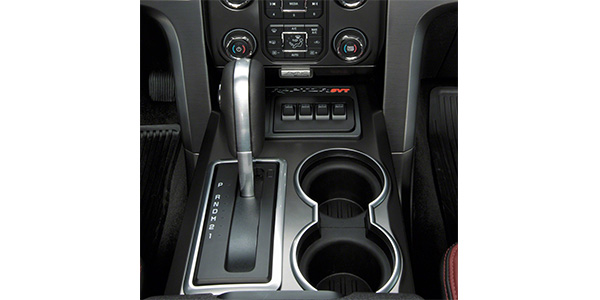
MODELS
2011-2014 Expedition, F-150 and Mustang
Some models may exhibit a delayed park to forward or reverse transmission engagement only on initial vehicle start up after parking several hours or overnight. The vehicle functions normally after the initial engagement has completed.
ACTION
Follow the Service Procedure steps to correct the condition.
SERVICE PROCEDURE
Use a can tool with a data logger to measure the amount of time it takes the vehicle to reach approximately 5 Km/h (3 MPH) at engine idle speed without pressing the accelerator pedal, verifying transmission pump operation.
1. Verify transmission fluid temperature is at 77 C (170 F) or above.
2. Park the vehicle for a minimum of 6 hours or overnight on a level spot where it can be driven forward uninhibited for up to 5 Km/h (3 MPH).
3. Using a scan tool, with Ignition On and Engine Off, select the following Parameter Identifications (PID)
a. VSS Vehicle speed
b. TRS Transmission Range selector
c. BOO1 Brake On
d. APP% Accelerator Pedal Position
e. Gear_Mode Transmission gear
f. TFT Transmission Fluid Temperature
g. TSS_SRC Turbine Speed Sensor
h. RPM Engine Revolutions
i. GearRat Transmission Gear ratio
NOTE: Read and review the following steps before performing them as they need to happen consecutively. Make sure the parking brake is released. Do not apply the accelerator pedal for this test.
4. Press the record function and perform the following steps.
a. Press the brake pedal.
b. Start the engine.
c. Immediately place the transmission selector lever drive (D) position.
d. Immediately release the brake pedal and allow the vehicle to move at idle speed only. Do not accelerate.
5. After recording for 15 seconds, stop the vehicle.
6. Using the scroll feature, slide the time bar to the point when the brake was released as indicated by BOO1, and note the time at the bottom.
7. Move the slide until the VSS shows 5 Km/h (3 MPH), or the maximum speed attained.
8. Did the vehicle reach 3 MPH within 5 seconds?
a. Yes, vehicle is operating normally. This procedure does not apply.
b. No, replace the transmission pump assembly.
Article courtesy Brake & Front End.













